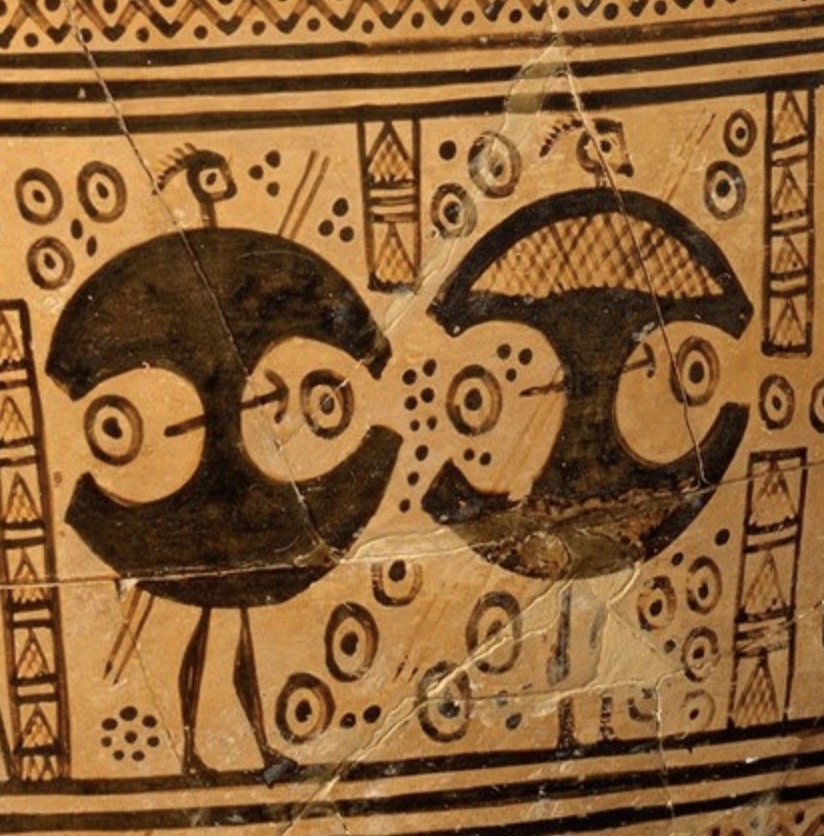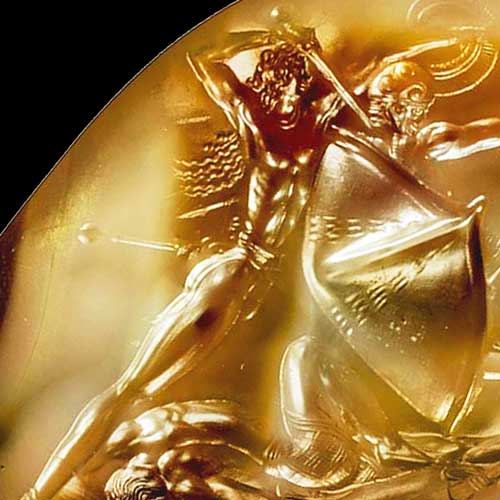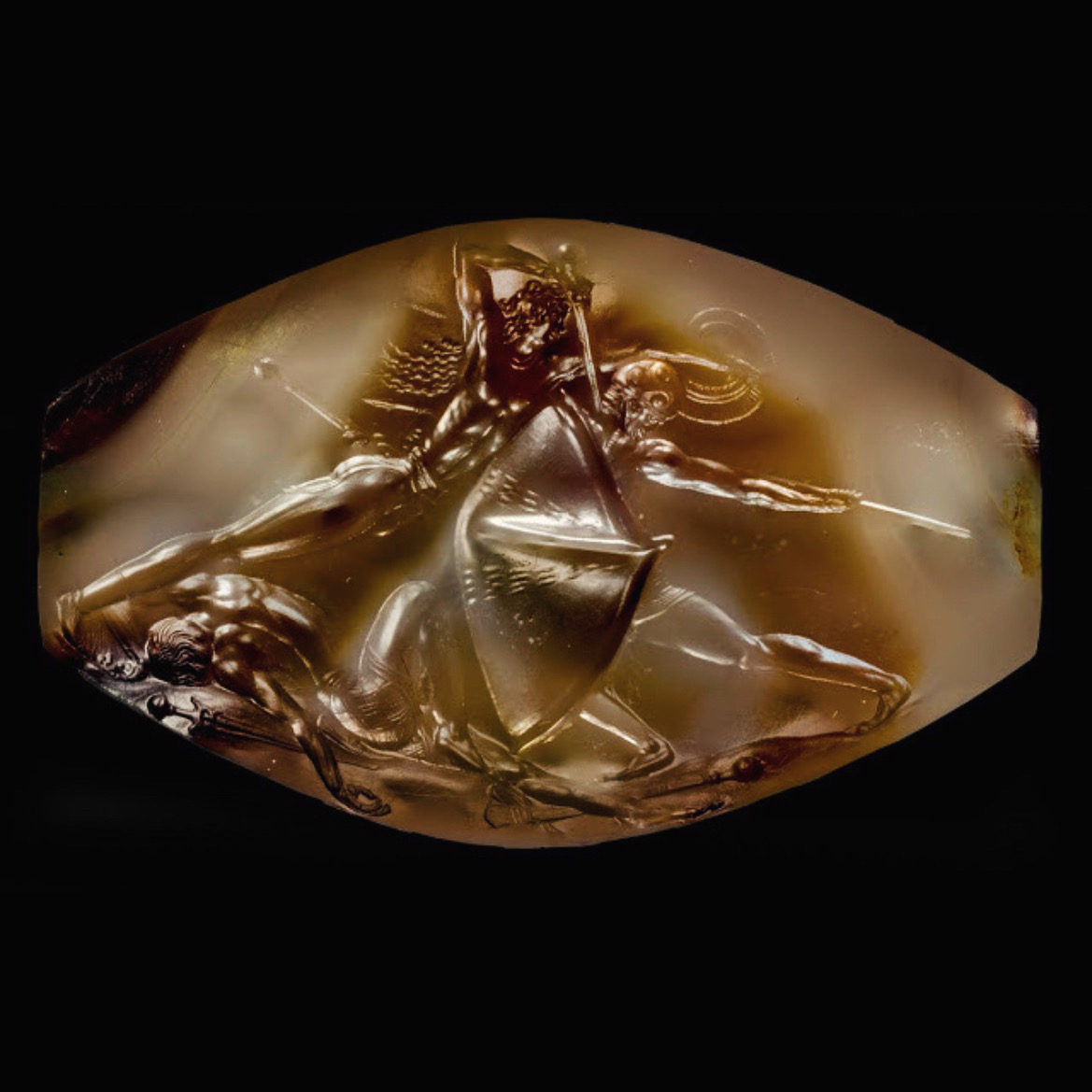You might have seen this extraordinary engraved agate before. It was found late in the University of Cincinnati’s 2015 excavation season at Pylos (deep in the Peloponnese) in an intact Mycenaean grave (ca. 1450 B.C.) and the discovery made the front page of the New York Times. And rightly so! The other 1500 or so objects arranged around the deceased’s body would have been the most important discovery in mainland Greece in seventy years, but this little (3.6 cm long) gem is the star.

The protagonist leaps in from the left, his beautiful body stretched and flexed and very nearly nude save for a sort of loincloth. His long hair flies out behind him (fun fact: very fancy ivory combs recovered from the tomb are a testament to the importance of manly vanity and grooming in the period) as he seizes his opponent by his helmet crest, wrenches him backward, and prepares to deliver the death blow. His hapless victim’s armour is pretty great: he wears a cap-like helmet with that glorious sickle-shaped crest providing a handy grip. The shield especially fascinates me: a wonderfully 3D rendering of the heroic ‘Boeotian’ shield otherwise only known from clunky geometric painting.


Such detailed rendering of the anatomy is naturalistic in a mode very rarely seen for the next thousand years. The third body, viscerally a corpse, is simultaneously crumpled and tensile upon the ground – his muscular back twisted towards us and the other arm slack over his fallen sword.
Somehow, in extreme miniature, the artist has made transcended any technological and stylistic barriers. This is true pathos. Poetry in motion. It is impossible to see it and not immediately think of Homeric battlefields: fleet-footed Achilles of the golden hair in action once again.




